
Where am I?
Internal process investigation
With the company's fast growing, we started to experience some problems that had a direct impact on user experience.
In order to have a clearer strategic view, we mapped all the contact points between our clients and our brand.
By observing this journey with a holistic approach, we were able to set objectives that helped our team to reduce possible obstacles our clients encountered in our processes.
In order to have a clearer strategic view, we mapped all the contact points between our clients and our brand.
By observing this journey with a holistic approach, we were able to set objectives that helped our team to reduce possible obstacles our clients encountered in our processes.
Problem
With the company's fast growth we started to have less operational efficiency and our users' satisfaction index started to drop. Processes were implanted separately inside teams, creating silos.
There was dissonance even in the management model, which resulted in each team having its own KPI.
The design team mission was to map the whole experience, aiding teams to prioritize more urgent problems and helping the business team to make decisions that propelled growth.
The technique used was Service Design.
There was dissonance even in the management model, which resulted in each team having its own KPI.
The design team mission was to map the whole experience, aiding teams to prioritize more urgent problems and helping the business team to make decisions that propelled growth.
The technique used was Service Design.
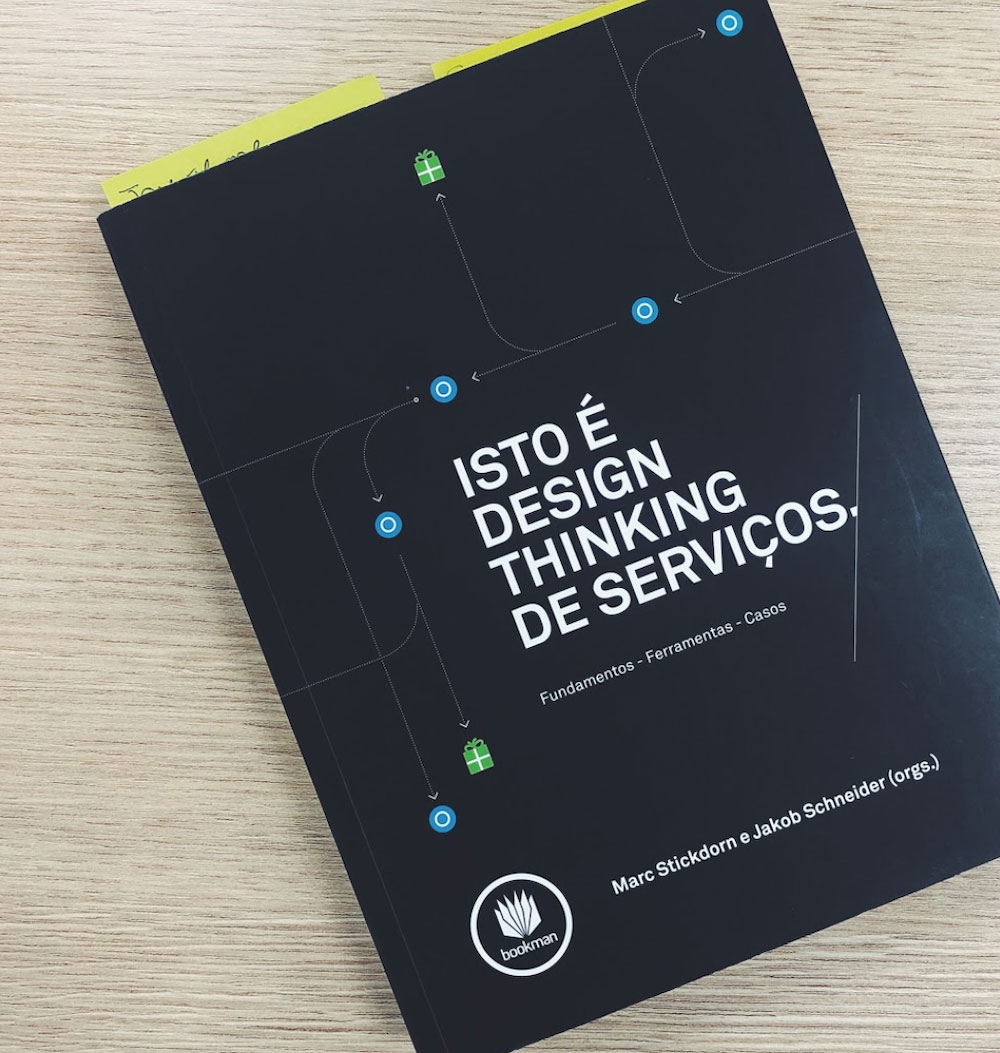
Audience
At first we looked to the company's teams:
• Marketing
• Sales
• Finances / Legal
• Client Success
• Product
• Marketing
• Sales
• Finances / Legal
• Client Success
• Product
My role
Generate value for the project and engage all of the team to participate in it.
Plan the design team schedule during research and manage the time of each designer involved in the project.
Due to the fact that we work in squads, I had to negotiate how much time of the sprint each Product Designer could spend in the project.
Plan the design team schedule during research and manage the time of each designer involved in the project.
Due to the fact that we work in squads, I had to negotiate how much time of the sprint each Product Designer could spend in the project.
Research
In the discovery phase of the project we used a methodology called in portuguese Matriz CSD, which consists in gathering up people from different areas to discuss the problem, and bring forward the following:
• Certainties
• Suppositions
• Doubts
After collecting all certainties, suppositions, and doubts about the project, these were listed in order of importance with the help of a product designer. I made a script to be used in the interviews to explore more deeply the suppositions and doubts. Also, by the end of the research, some certainties were debunked.
The script was improved and the way designers registered the research data was normalized. After this we started the interviews schedule.
• Certainties
• Suppositions
• Doubts
After collecting all certainties, suppositions, and doubts about the project, these were listed in order of importance with the help of a product designer. I made a script to be used in the interviews to explore more deeply the suppositions and doubts. Also, by the end of the research, some certainties were debunked.
The script was improved and the way designers registered the research data was normalized. After this we started the interviews schedule.
The Research Ops challenge
As the sales and client success teams both have a complex routine filled with meetings with clients, scheduling interviews was very challenging.
In addition to that, the product designers also had to share their time between squad tasks and the interviews.
I had to work hard to keep the teams engaged in the project, showing the benefits it would bring both the company and our careers.
All the interviews were done by me and a designer, where I participated sometimes interviewing, sometimes taking notes. We recorded all interviews and used Google Forms to take notes.
We were able to interview 32 team members from marketing, sales, finances, legal and client success.
In addition to that, the product designers also had to share their time between squad tasks and the interviews.
I had to work hard to keep the teams engaged in the project, showing the benefits it would bring both the company and our careers.
All the interviews were done by me and a designer, where I participated sometimes interviewing, sometimes taking notes. We recorded all interviews and used Google Forms to take notes.
We were able to interview 32 team members from marketing, sales, finances, legal and client success.
Prototyping a service
Thanks to the structured way the research data was collected, it was possible to make prototyping much faster.
A product designer was responsible for analyzing the data and bringing up the most frequent topics.
I provided the infrastructure for the service design exercise.
Several hours in this meeting resulted in Kenoby's user journey v1.
A product designer was responsible for analyzing the data and bringing up the most frequent topics.
I provided the infrastructure for the service design exercise.
Several hours in this meeting resulted in Kenoby's user journey v1.
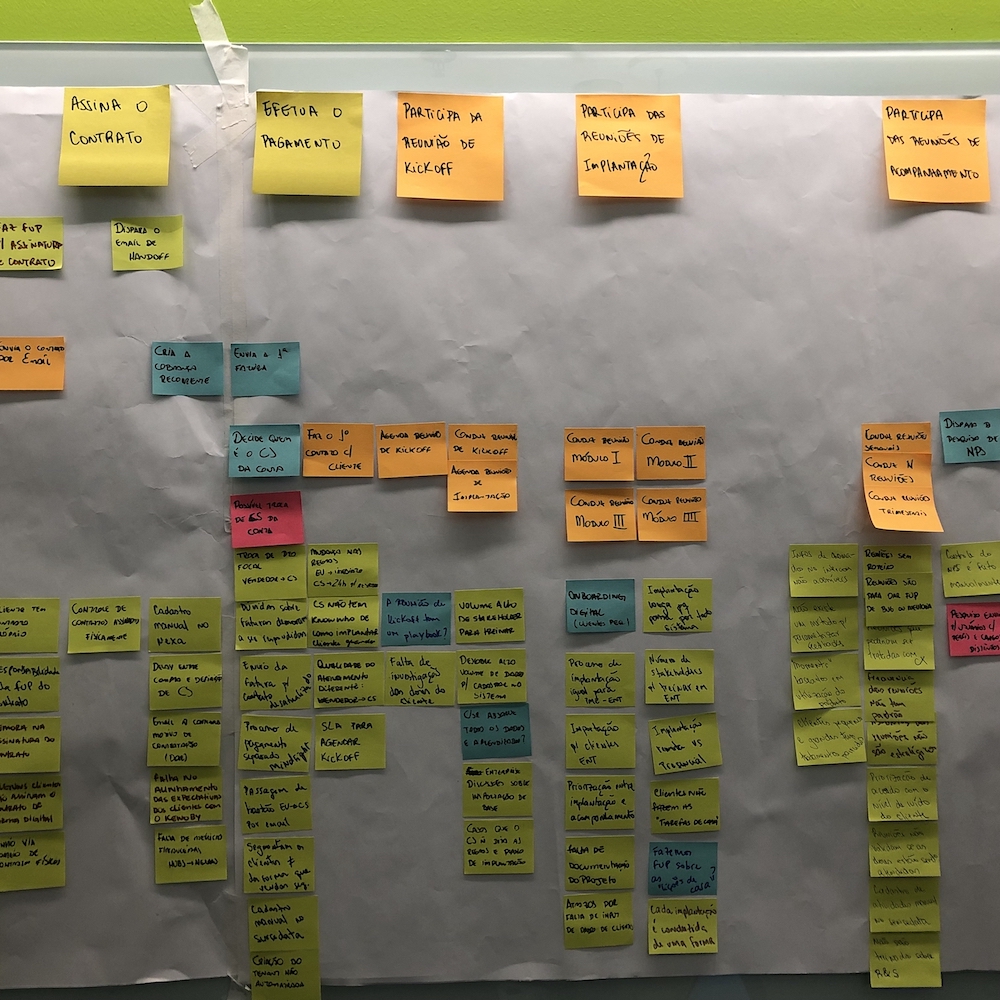
Thanks to the structured way After this collective effort to design the first version, a product designer used all the data to draw using Sketch app, an improved version, to be used for validation.
Team validation
The designed version was printed and the user journey was organized by area, focusing the handoff between areas. An example of the handoff is when a sale is made and the client goes to the onboarding process (handoff between sales team and client success team).
Validations were made only in some steps due to team schedule.
All the interviewees validated the journey and brought some insights on what was missing in this first version.
An interesting and important detail of this exercise was to have a blueprint of the users expectations in every touchpoint.
Validations were made only in some steps due to team schedule.
All the interviewees validated the journey and brought some insights on what was missing in this first version.
An interesting and important detail of this exercise was to have a blueprint of the users expectations in every touchpoint.
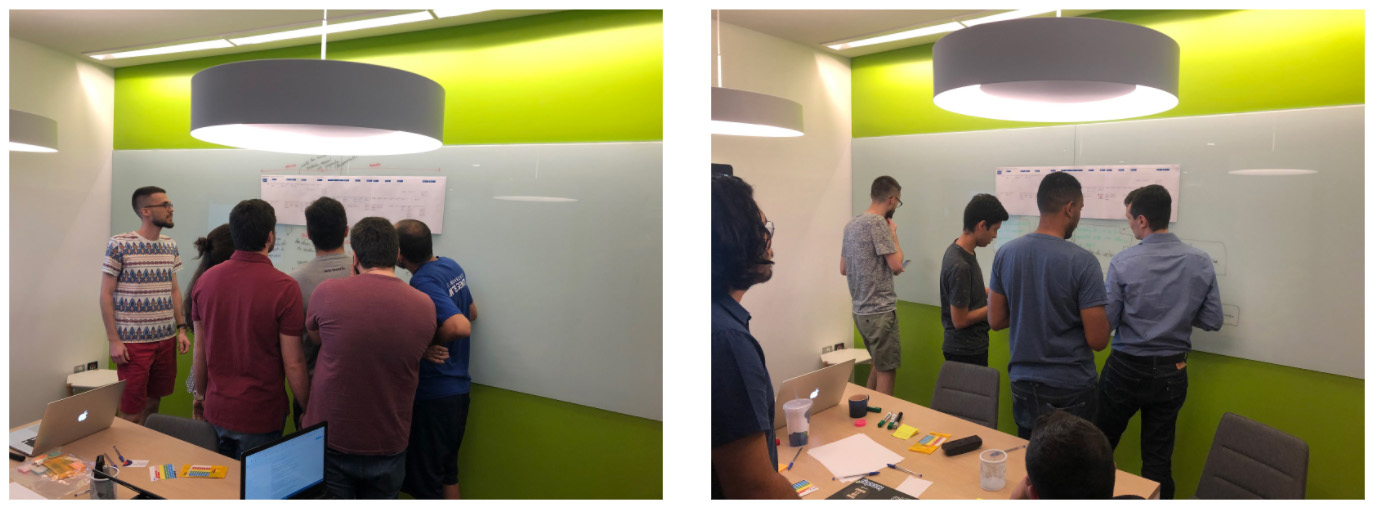
First delivery of the Journey
I made a presentation for the whole company, giving the details of every step of the user's journey and how it affects the company's internal processes.
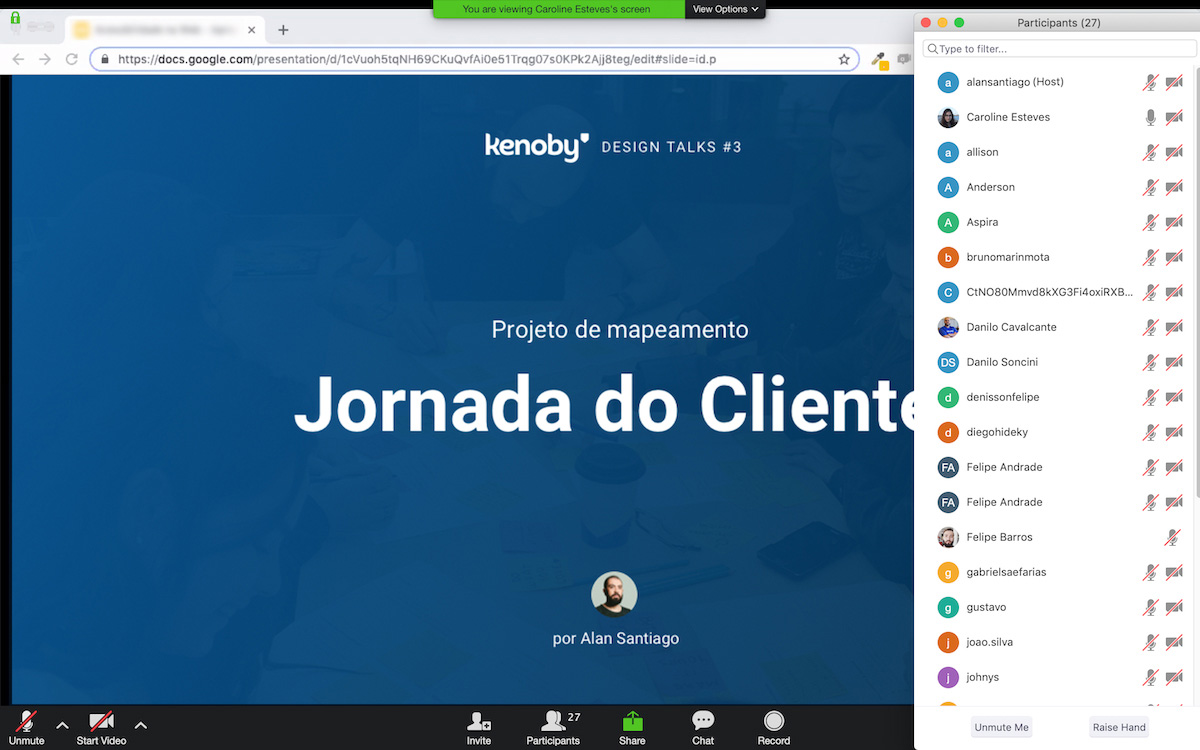
After this presentation a Google Forms was sent for the whole team to vote which were the most critical points that negatively affected our productivity.
As a result it was possible to prioritize the topics to do more discovery research.
This second research phase focused on the decision-maker users.
As a result it was possible to prioritize the topics to do more discovery research.
This second research phase focused on the decision-maker users.
Another Research Ops challenge
The goal was to interview Kenoby's decision-maker users. Usually these users are high-ranking managers of large companies.
With the help of the customer success team it was possible to interview 6 of these users, achieving astonishing discoveries for the project.
With the help of the customer success team it was possible to interview 6 of these users, achieving astonishing discoveries for the project.
Post project initiatives
• Successful plan based on the different recruitment levels of expertise
• Development of a new team to implant our system for Enterprise clients
• Creation of a new analytics team, to integrate data between teams and define global KPIs for the company
• Development of a new team to implant our system for Enterprise clients
• Creation of a new analytics team, to integrate data between teams and define global KPIs for the company
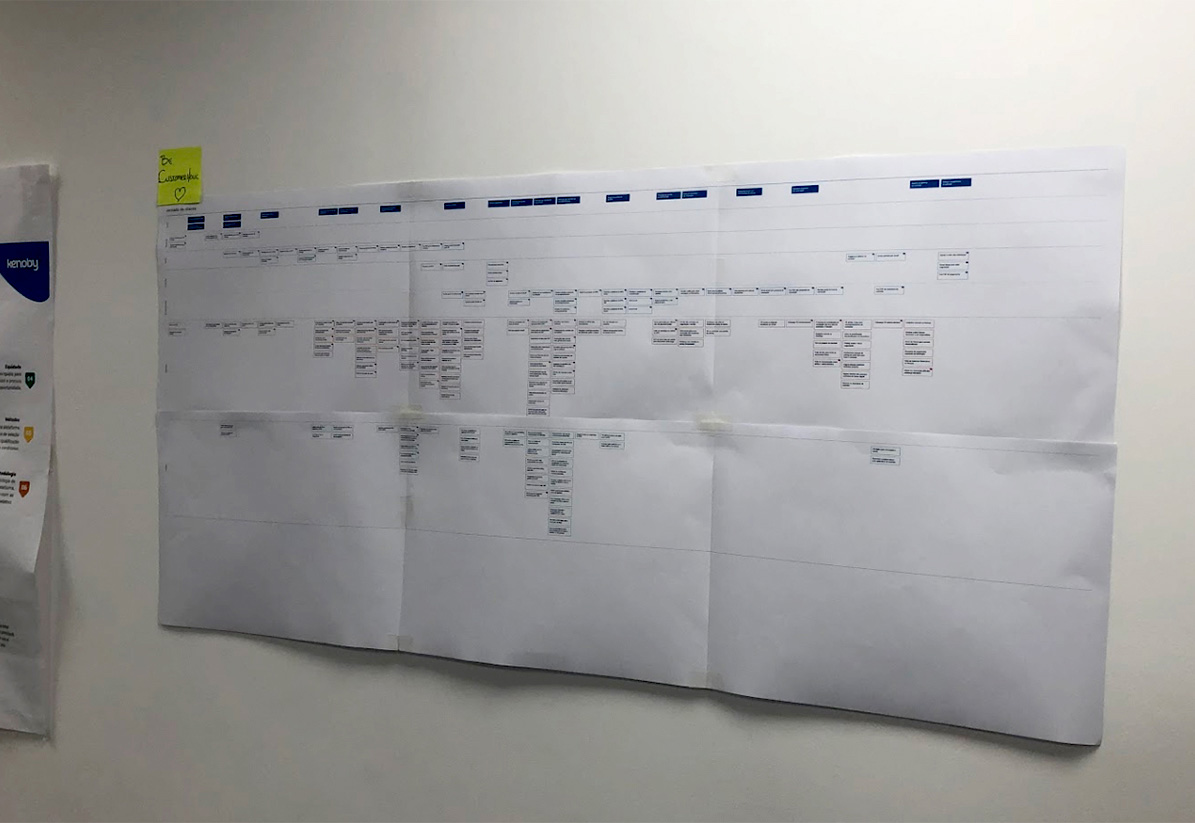
Conclusion
Kenoby Flywheel project brought a holistic view of the company's internal processes and our client's journey.
We had a considerable improvement in the design culture and how the company perceived the team. All of the product designers felt more like strategic members of the company.
To maintain a project that puts together all members of the company leadership demands a great effort on agreement, engagement and humbleness.
We had a considerable improvement in the design culture and how the company perceived the team. All of the product designers felt more like strategic members of the company.
To maintain a project that puts together all members of the company leadership demands a great effort on agreement, engagement and humbleness.
What I've learned
• Negotiation
• Influence
• Team engagement
• Time management
• Research Ops
• Influence
• Team engagement
• Time management
• Research Ops